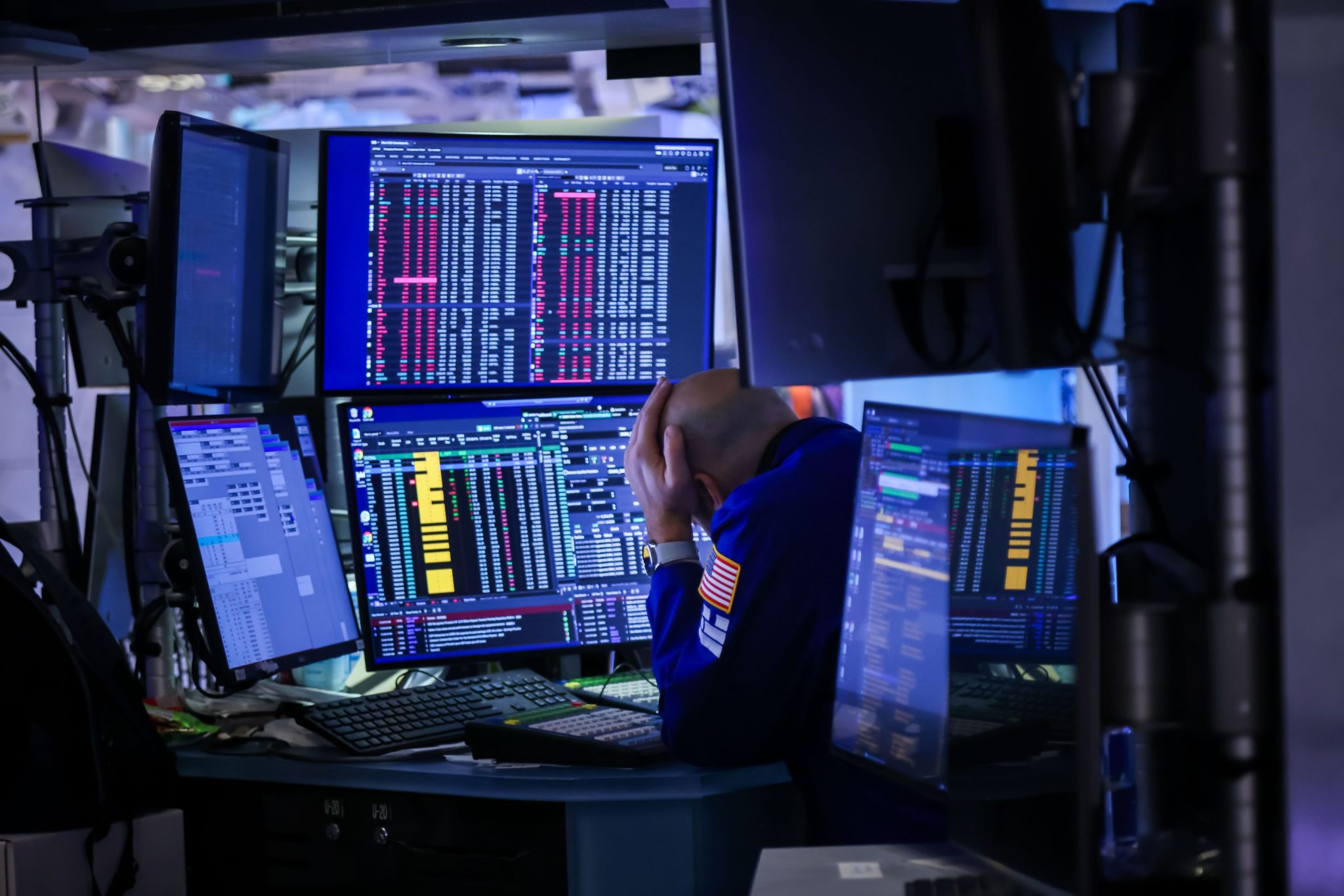Even then, Apollo’s chief economist, Torsten Sløk, wrote this week that the S&P is at “historically extreme valuations.”
In a note to clients yesterday, Sløk charted the “Warren Buffett indicator” (U.S. stock market cap to GDP) against the Shiller cyclically adjusted price-to-earnings ratio. The result is—perhaps unsurprisingly—that over time the Buffett indicator has increased toward the extreme end, as has price-to-earnings. However, 2025 stands out as a particularly extended outlier.
The latest data underlines a broader concern among analysts that a reckoning is looming for the markets. The CEOs of both Morgan Stanley and Goldman Sachs have stated this week that they foresee a significant selloff ahead, with markets potentially adjusting down by as much as 20% over the next two years.
High valuations themselves don’t necessarily signal an imminent correction, argued UBS’s chief investment officer, Mark Haefele, in a note to clients yesterday. He said that, on the whole, there is “no doubt” valuations are above average, but the market is unlikely to correct itself based purely on this fact. Instead, he argues declines will come “when corporate profit growth disappoints, with forward returns more correlated with changes in earnings expectations over the next 12 months.”
Haefele added that “results from the current earnings season have been solid, with both the breadth and magnitude of earnings beats so far exceeding historical averages.” UBS forecasts S&P 500 earnings per share to grow 10% this year, with upside to an estimated 7.5% growth next year. Additionally, he believes current valuations are justified, as the increased weighting of higher-multiple sectors (such as IT) in equity benchmarks should help sustain higher valuations.
It would be remiss not to mention the driver behind these valuations: artificial intelligence (AI). Capital expenditure on this revolutionary technology isn’t only pumping valuations in markets; it’s so significant that it’s a key driver for the U.S. economy as a whole.
The level of funds being invested in AI and its infrastructure has led to (arguably inevitable) bubble questions about whether the technology can live up to its promise.
“Given aggressive valuations, however, investors must be asking where the fuel for 2026 gains will come from,” noted Lisa Shalett, chief investment officer at Morgan Stanley, in a note on Monday. “In essence, portfolio positioning hinges on whether the AI capex boom will deliver as modeled. Our view remains 50/50, given that implementation may take longer than hoped for, with productivity gains limited to a few scaled companies.”
Of course, valuations also come down to timing: when the market sees companies finally delivering the results they are being valued on. This is the argument of Mary Callahan Erdoes, CEO of JPMorgan’s asset and wealth management business, who acknowledged that while in some stocks there is “a little too much concentration,” she argued at Fortune’s Global Forum last month:
“AI has not even been deployed anywhere near the extent that it will be. Less than 10% of companies actually say that it’s embedded in the services and the products that they deliver today. There’s an enormous amount of opportunity.”
She added, “That’s why you’re seeing the multiples the way they are. And the question is, how fast will we grow into those multiples? It’s not that the multiples are wrong, they will eventually be right; they may not be right for every company.”
Here’s a snapshot of the markets ahead of the opening bell in New York this morning:
https://fortune.com/2025/11/07/apollo-chief-economist-valuations-ai-wall-street-reckoning/
